por Ruby J. Rodríguez
In my twenties, I often committed to gatherings only to back out when I remembered that I actually prefer to chill at home, usually alone. Now, in my thirties, building community and getting out of my comfort zone is a practice that I value. So, I was fully aware when I signed up for a National Outdoor Leadership School (NOLS) Executive Leadership course that I would be pushing my boundaries on many levels. Structured as a kayaking expedition on Mexico’s el Mar Bermejo (the Red Sea, otherwise known as the Sea of Cortez), I welcomed the investment in my personal and professional development. That did not stop subtle, brief moments of hesitation (even regret) from creeping up on me as the date approached. This will be good for me, I told myself.
After signing up for the executive leadership course, I participated in Latino Outdoors’ Mapping Migraciones initiative. This year-long collaboration with Audubon explores how birds and people are connected through geography and culture. I learned about my family’s migration story and realized that my great-great-grandmother Guadalupe migrated through the Red Sea, which is the same water I would be on. My relationship with nature, how I move through this world, and some of my leadership challenges, are all intertwined with my desire to heal and evolve from cultural assimilation and intergenerational trauma. That I would return to the same water that she journeyed on was an endeavor I never considered.

The days went by until my travel date arrived. I triple-checked my gear list and ventured outside of the U.S. for the first time in my life. Upon landing at Loreto Airport, I cried a little when I saw the preciousness of the plants and landscape. A few minutes later, I met my expedition pod of mostly White men. I knew in advance that I was the only woman participant and one of two people of color, and had felt okay with that. I believed that I had a lot to offer the group. But, in my state of vulnerability, I became overwhelmed and felt myself close off.
Following an awkward and sleepy 90-minute drive to the NOLS Mexico campus, I decided to embrace the challenge and remain open to connecting with my pod. We sat and enjoyed a meal together, washed dishes, and moved through a facilitated conversation about our goals and personal contributions towards a successful expedition. I began to really see my pod members. I took a risk and offered my openness and trust, and requested their support of my presence on the expedition in exchange for my support of them.

Sometimes I am comfortable with using my voice and can do so eloquently. My struggle is with being front and center as a designated leader and knowing that people are waiting to hear my voice. Designated leadership is a key component of NOLS’ training framework, and I was transparent about my desire to work on this during our time together. Well, my day as a designated leader came, and I promptly fumbled. Bleh.

I had another chance to practice the following day. This time I showed up more prepared and practiced speaking from my diaphragm. I received props for that. We learned that rather than ask someone to adopt an inauthentic leadership style, we can come closer and practice listening intently to soft-spoken leaders like me. For me, it is a two-way street. Finding my signature leadership style is not about becoming a loud, talkative extrovert. It’s about building my confidence and communication skills and leaning into my own strengths. I offered resilience and community building to our expedition: two invaluable skills to have while working together towards a common goal. I also modeled the art of meandering through the subtleties of nature, which I believe supported wellness and introspection during a week of uncertainty. Making space for diverse leadership to develop and thrive will serve our teams, communities, and society in ways that empower us all.


On our last day in the field, I spent some time wondering what my great-great Grandma would think of my time snorkeling and practicing my leadership skills in the Red Sea. Connecting with her through the land and water has encouraged a kind of healing and growth that simply cannot be achieved from the comfort zone of my living room.








